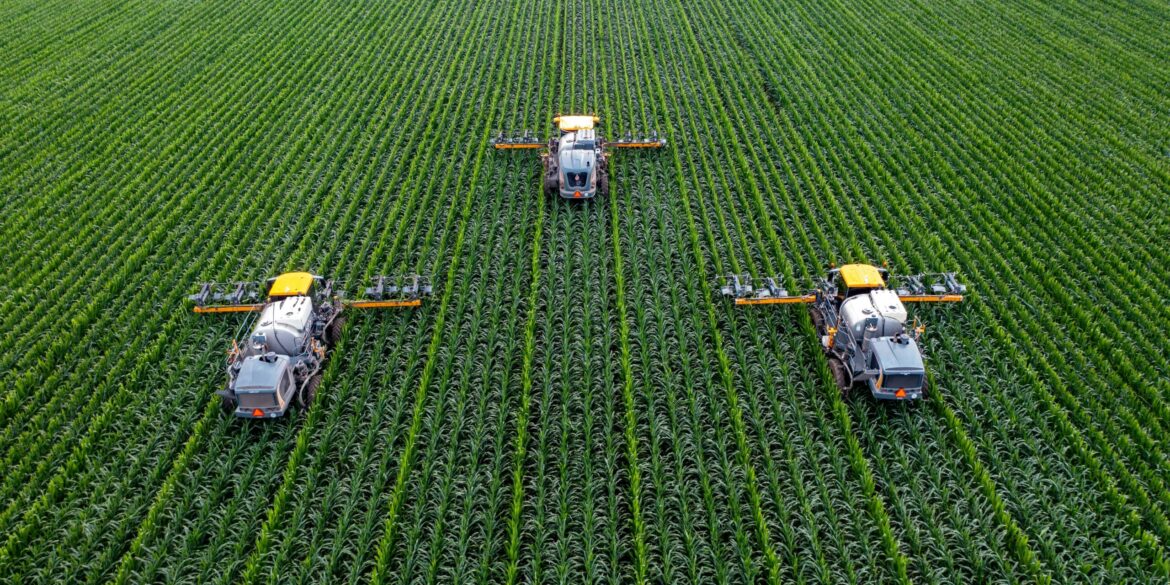In a groundbreaking move that could reshape the future of American agriculture, a coalition of dairy cooperatives in Wisconsin has unveiled what they are calling the “barn of the future.” Debuted on November 15, 2025, this state-of-the-art facility brings together cutting-edge technologies, renewable energy systems, and a deep focus on animal welfare to present a new model for sustainable dairy farming in the United States. The facility, the first of its kind in the country, is part of a pilot project aimed at improving cow well-being, minimizing environmental impact, and increasing transparency across the milk production chain.
Located in the heart of America’s dairyland, the facility represents a significant shift in the industry’s approach to both productivity and ethics. Unlike traditional barns, this advanced structure is equipped with robotic feeding systems that deliver precisely measured rations to individual cows based on their dietary needs. Climate-controlled stalls adjust in real time to changes in temperature and humidity, reducing the stress animals often face due to weather fluctuations. Smart sensors track cow behavior, health indicators, and activity levels 24 hours a day, allowing farmers and veterinarians to intervene at the first signs of illness or discomfort.
What sets this facility apart even further is its use of renewable energy, sourced directly from the surrounding pasture. Methane and biogas collected from manure are converted into energy that powers much of the barn’s operations, effectively closing the loop on waste while reducing the carbon footprint of dairy production. This integration of clean energy with smart monitoring is a significant step toward making the dairy sector more sustainable and less reliant on fossil fuels.
Executives behind the project acknowledge the upfront costs are significantly higher than for a traditional dairy setup. However, they argue that these expenses will be offset over time by gains in milk yield, improved herd health, reduced labor requirements, and compliance with increasingly strict environmental regulations. The ability to monitor and optimize every aspect of cow comfort and nutrition is expected to translate into both higher productivity and lower veterinary costs. Moreover, as climate change pressures grow and consumer scrutiny intensifies, being able to demonstrate a low-emission, animal-friendly supply chain gives producers a competitive edge in the marketplace.
This new barn arrives at a crucial time for the U.S. dairy industry. Many farms, particularly in the Midwest, are struggling with rising operational costs, labor shortages, and growing public concerns over animal welfare and environmental sustainability. Traditional dairy farms often rely on large numbers of workers to manage feeding, cleaning, and milking schedules—tasks that are increasingly difficult to maintain amid a dwindling rural labor pool. Automation offers a potential solution, not only by reducing human labor demands but by improving consistency and data accuracy in herd management.
The barn also addresses growing calls for transparency. In recent years, consumers have become more interested in where their food comes from, how it is produced, and what impact it has on the environment. This facility includes observation corridors where visitors, researchers, and brand partners can view operations without disturbing the animals. Real-time dashboards display individual cow metrics, allowing for an unprecedented level of openness in how dairy products are sourced.
Academic institutions have played a key role in the barn’s development. Engineers and agricultural scientists from leading universities have contributed to the design and data systems, conducting studies to evaluate the effectiveness of the new technologies in real-world settings. For example, researchers have tested implantable temperature sensors and behavior-monitoring devices that feed data into predictive models, helping identify early signs of heat stress—a condition that can drastically impact both cow health and milk quality. These innovations are not just theoretical but have been deployed on-site to optimize operations.
In addition to improving animal welfare and operational efficiency, the barn seeks to establish a model for other farms to follow. Planners envision that as the technology becomes more widespread and economies of scale kick in, costs will decrease, making it feasible for a broader range of dairy operations, including small and mid-sized farms. To facilitate this transition, the pilot program includes partnerships with agricultural extension services to provide training and technical support for interested producers.
Despite the optimism, challenges remain. Scaling the model will require significant investment, and not all farms have the financial or infrastructural capacity to implement such sweeping changes. There are also concerns about system maintenance, data security, and the need for ongoing technical support. Nevertheless, the Wisconsin facility stands as a powerful proof of concept—a demonstration that it is possible to combine technological innovation, environmental responsibility, and humane animal treatment in a single, scalable operation.
The debut of the “barn of the future” signals a transformative moment for American agriculture. As the dairy industry faces mounting pressure to modernize and meet evolving ethical and environmental standards, this project offers a compelling vision of what the future could look like: cleaner, smarter, and more compassionate. It is a blueprint not just for the next generation of dairy farmers, but for an entire food system seeking to balance productivity with purpose.

